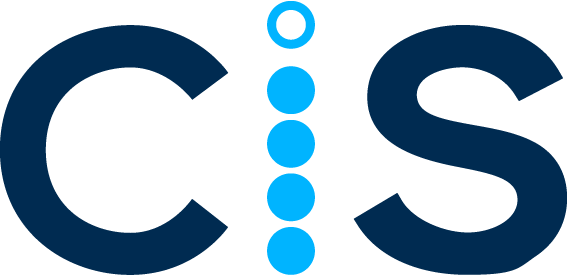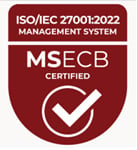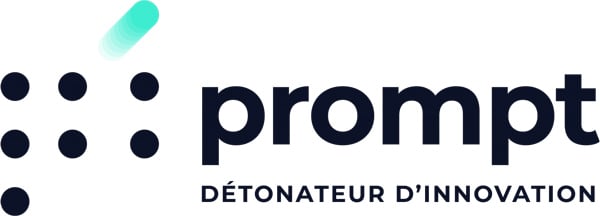Frequently asked questions
Find answers to your questions about sales and distribution.
FAQ – Direct store delivery
Direct Store Delivery (DSD) is the preferred distribution method for manufacturers who want to transport their products to retail stores—or points of consumption—themselves. One advantage of this choice is that it eliminates the need for third-party logistics companies.
By bypassing the distribution centers of affiliated retailers, manufacturers retain privileged access to points of sale, which preserves their ability to act and control important factors beyond the distribution of their merchandise. This includes promotional support products and market-related services such as merchandising, information gathering, and equipment service.
On a larger scale, manufacturers often benefit from having their own network of regional distribution centers. Depending on the situation, these centers can provide value-added services, such as packaging products for specific point-of-sale promotions.
Despite the marked shift by retail giants toward controlling their supply chains through their own distribution centers, direct-to-store delivery offers advantages for both manufacturers and retailers when it comes to perishable products such as baked goods and dairy products, for which it is important to reduce the number of days in the supply chain.
This distribution model is also suitable when the product range is extremely diverse, as in the case of greeting cards, for example. The manufacturer’s representative can then take care of displaying the products, whereas for the retailer, merchandising a wide variety of low-value products would be too time-consuming.
The DSD (direct store delivery) model finally makes it possible to effectively meet the needs of smaller retail outlets such as gas stations, convenience stores, and pharmacies, which require more frequent restocking.
Direct delivery meets the expectations of retailers who want to avoid managing large inventories as much as possible, with the costs and labor that this entails. They also benefit by leaving merchandising to the distributor. As for the latter, it benefits from having more control over shelf presentation and marketing, with the possibility of increased sales for the benefit of both parties.
Characterize your sales volumes based on the different types of retailers you serve by analyzing data from your order history.
Determine your sales strategy. Can your delivery staff provide the time required to handle pre-sales activities that are useful for planning, or would this place too much strain on them? Would this task then fall to your sales representatives? The review will determine the deployment that best suits your resources.
Organize routes: Route planning solutions pay for themselves by enhancing your ability to take into account all the variables involved in route optimization, such as distances, service hours, truck capacity, speed limits, number of stops, etc.
With DSD software and the appropriate mobile devices, including a barcode scanner, your delivery drivers will see their activities become faster and more efficient. They will be able to produce receipts and invoices directly at the point of sale and keep digitized proof of delivery, including signature capture, preventing disputes over deliveries. GPS and remote communication from mobile devices will give you real-time visibility into transactions and the location of your vehicles. The DSD solution includes in-vehicle inventory control, protecting you from loss or theft of merchandise.
Finally, advanced analytics features will enable you to interpret your delivery and order data to obtain an accurate picture of demand for a product category, territory, chain, individual store, etc.
Similarly, analyzing product returns will enable you to provide customers with the most relevant inventory recommendations, increasing profitability for each customer.
We are seeing that product ranges, like assortments, are not only expanding but also changing more rapidly. Promotions are also becoming more numerous. Delivery times are tending to shorten, and on top of all this there is the seasonality and/or volatility of demand, which must remain a constant concern if we wish to optimize the quantity and availability of merchandise in order to maintain maximum efficiency.
Optimization is also essential to offset rising costs, whether related to labor, regulations and restrictions, or traffic congestion, especially in urban areas.
Attention must be paid to both rationalizing vehicle loads and optimizing routes. Practices that result in cost reductions include:
Move from static planning to dynamic planning (frequent review to anticipate adjustments required in resource deployment to respond to changes such as peaks or seasonality in demand; new customers, routes; or even to respond to last-minute additions or cancellations of orders).
Switch from decentralized planning to centralized planning (taking into account all resources in order to increase adaptability).
Promote transparency and visibility so that both retailers and carriers have better control over their actions related to the supply chain.
Optimize the use of truck space and temperature-controlled areas by streamlining loads.
The combination of the software solutions mentioned (DSD mobile solution and route optimization tool) offers a range of benefits, including the following:
- Efficiency in the field, saving up to an hour per day on each route.
- Transportation cost savings of up to 15%.
- Customers satisfied with on-time delivery.
- Employee satisfaction enhanced by realistic workload planning.
- Reduced mileage and carbon footprint.
- In terms of hardware equipment: resource savings and reduced costs when using cloud solutions.
FAQ – Sales and CRM
Sales Force Automation consists of the judicious use of software applications to assist sales staff, enabling them to increase productivity, primarily in terms of speed of action, but also particularly in terms of accuracy in the execution of their tasks. Perhaps most importantly, however, is the control of information, as any data, figures, statistics, or trends can be obtained at the touch of a button, anytime, anywhere. This instant access to information is crucial for optimizing decision-making, which is the foundation of any sales initiative.
For some, Sales Force Automation is more specifically aimed at managing and analyzing data relating to existing customers and interactions with them, with the aim of maintaining satisfaction. However, SFA also aims to automate tasks related to prospecting, sales pipeline management, and the evaluation of opportunities and projected revenues.
However, you will find a very different perspective on SFA if you ask food or consumer product manufacturers who need to deploy field representatives—who regularly visit retailers such as grocery stores, department stores, and others. For them, SFA is the use of automation to support and streamline in-store tasks such as order taking, merchandising, and business reviews.
In cloud or on-premise mode, Sales Force Automation solutions can be integrated with other applications such as financial systems (ERP), eliminating data entry redundancy. Integration can also involve Business Intelligence applications—although the SFA application itself can offer extensive functionality for data analysis and drilling, in the form of a manager’s dashboard. An interactive sales system allowing customers to place their orders online can also be expected to be included as an additional module in the application.
Essentially, to increase efficiency and reduce costs. Automating activities using software tools is undoubtedly one of the main ways to reduce the time required for any task.
Added to this is the paramount importance of information, which has become one of the most powerful digital tools in its own right—whether it be outgoing information, such as price lists, product sheets, or promotional details, or incoming information, such as vehicle routes and locations (GPS), digital archiving of transactional documents (which can then be emailed to the customer), and finally the collection of all information gathered at the point of sale (product distribution, compliance with commercial agreements, retail prices, competition).
The CRM (Customer Relationship Management) system can be useful in after-sales relations to build customer loyalty and satisfaction by recording details of interactions with customers. The information managed includes contact details, emails and attachments, and a timeline of your sales team’s activities.
By automating tasks performed at points of sale, an SFA solution puts information control in your hands, providing you with transparency and visibility into what is happening in the field, and the ability to accurately gauge your key performance indicators (KPIs), whether they relate to execution (staff performance) or transactions (company performance).
Since costs are largely related to human resources, they will be reduced by any measure that increases efficiency.
In addition to the speed provided by automation, there are also benefits associated with integration between applications: by equipping the system with an interface to transfer data between the SFA application and the ERP management software, the latter is fed without the need for manual data entry, resulting in savings in labor, time, and money. Once entered in the field at the point of sale, this data remains usable from one application to another, throughout all stages of the financial cycle.
Let’s also mention the time saved by managers who have instant access to complete information, as well as summaries and statistics that are automatically recalculated according to any requested categorization.
Repetitive manual work has just been mentioned, in the form of data entry that has to be duplicated if applications are not integrated with each other. But repetition, again, also increases the risk of errors, which can be avoided with a system that has integrated SFA.
There is also the risk of oversights—which SFA software is configured to help avoid: with multiple tasks to complete during each customer visit, representatives can rely on the application to provide them with a visual workflow diagram, which is pre-adapted to the type of customer they are visiting. Their mobile device also stores their list of special points to consider (To-Do List).
Lost documents? That’s a thing of the past, thanks to digital archiving. Orders, past invoices, signed delivery notes—all remain available in memory and can be reprinted at the customer’s request or sent digitally.
And once again, time. Time saved for managers, thanks to compilation and performance analysis tools, as well as time saved by mobile SFA users, as this performance analysis will show: it has been proven that an SFA application can save sales representatives up to 15% of their time.
A reduced risk of errors is already a good point in terms of satisfaction. But what is most significant is all the power of information that you can leverage thanks to SFA. It’s up to you to make the numbers speak for themselves: by tracking your customers’ purchase history, you have everything you need to make projections and develop solid business strategies that will optimize product availability to maximize sales, offering the most relevant quantities and products for each customer, depending on the time of year, in order to avoid stock shortages and reduce returns. Your customers will also be better informed, better equipped, and more efficient. Everyone wins.
As the representative begins their day, the system determines the sequence of customers to visit that day, in accordance with each customer’s specific visit frequency. At the start of the visit, the representative can refer to a pre-established sequence of tasks for each type of customer and consult their notes on that customer. They have access to the messaging system at all times, which is used to communicate with the office or other mobile users.
For his business presentation, his computer contains everything he needs. Details of promotions, product sheets, and a dynamic analysis query tool with statistical diagrams to interpret sales history, illustrate projections, and demonstrate the relevance of his suggested order.
Order taking and merchandising data acquisition are carried out efficiently and quickly using automated tools such as keyboards, scanners, cameras, and checklists. This allows managers to receive information about inventory, planograms, retail prices, and competing products remotely.
The key word is responsiveness. We have highlighted the power of information as the number one tool, whether it is for measuring performance or establishing your business strategies on solid foundations.
Now, information is available even remotely and in real time if required, giving you a head start in defining your actions. SFA also provides the communication network to transmit instructions to your field staff at any time. You can even expand this network by implementing automation for your delivery teams with a direct store delivery (DSD) application, ensuring the best possible response to your customers’ needs by networking all levels of your organization.
FAQs – ERP
ERP systems are used to connect a large amount of information and business processes in order to facilitate the flow of data between them. By collecting all shared transactional data within an organization from different sources, ERP eliminates data duplication and provides data integrity with a single source of truth.
ERP systems are essential for managing thousands of businesses of all sizes and in all sectors.
The acronym ERP stands for Enterprise Resource Planning. It is a complex name that refers to the various processes essential to managing a business, including inventory and order management, accounting, human resources, customer relationship management (CRM), and more. Basically, ERP software integrates these different functions into a comprehensive system in order to streamline processes and information across the entire company.
The common feature of all ERP systems is a central, shared database that supports multiple values used in different departments of a company. This means that employees from different teams will have easy access to the same information shared between them in real time to promote efficient communication.
- Collect information on business processes in real time;
- Manage payroll, benefits, and employee information;
- Create company-wide strategies;
- Promote account updates;
- Enable order processing;
- Receive alerts about identified issues;
- Manage recruitment initiatives;
- Track manufacturing and supply chains.
Like CRM, ERP is designed to streamline business operations. However, CRM focuses on the sales side of the business, while ERP is integrated and used simultaneously across multiple departments.
At its core, an ERP system provides interconnected business process management, enabling standardized real-time information for each department. Any issues identified are then sent as alerts to designated recipients. ERP and CRM systems improve the efficiency of all internal processes. ERP focuses on reducing process management costs. Both solutions offer centralized databases for recording and cataloging all customer data.
CRM is known to work better as a facilitator of higher sales volume and to improve customer interactions. Regardless of the size of the company, deploying a CRM or ERP system is much more advantageous than searching for customer data through email chains, handwritten notes, or instant messaging.
Since every company needs to optimize its customer relationships, CRM helps ensure customer satisfaction and loyalty. With an ERP system, each department can better understand and interpret the workflow of other departments.
In addition, managers can also get a real-time overview of what is happening in each of the different departments, which is a considerable asset for growing companies and companies that want to thrive.
Get an accurate view of the business with access to information stored across multiple systems. Manual data management processes are time-consuming and prone to errors. From the executive level to the front lines, effective decision-making is compromised without reliable and timely data. Most ERPs are designed to provide integrated real-time dashboards, reports, and analytics across all integrated processes to support effective decision-making.
By having access to real business information, users benefit from real-time visibility to better identify issues, trends, and opportunities, and instantly access the underlying transaction to act quickly. Real-time transparency of business performance across all departments is therefore one of the major advantages.
ERP as a Service (SAS): With these ERPs, all customers operate on the same code base and cannot access the source code. Users can configure the code but cannot modify it.
ERP in an IaaS cloud: Companies that opt for custom code in their ERP cannot use ERP as a service. If they want to operate in the cloud, their only option is to use the services of an IaaS provider, who will move their servers to a new location.
For the vast majority of companies, ERP as a service offers three main advantages: lower upfront costs, easier upgrades to new versions, and managers who are sometimes reluctant to pressure the company to write custom code for them.


